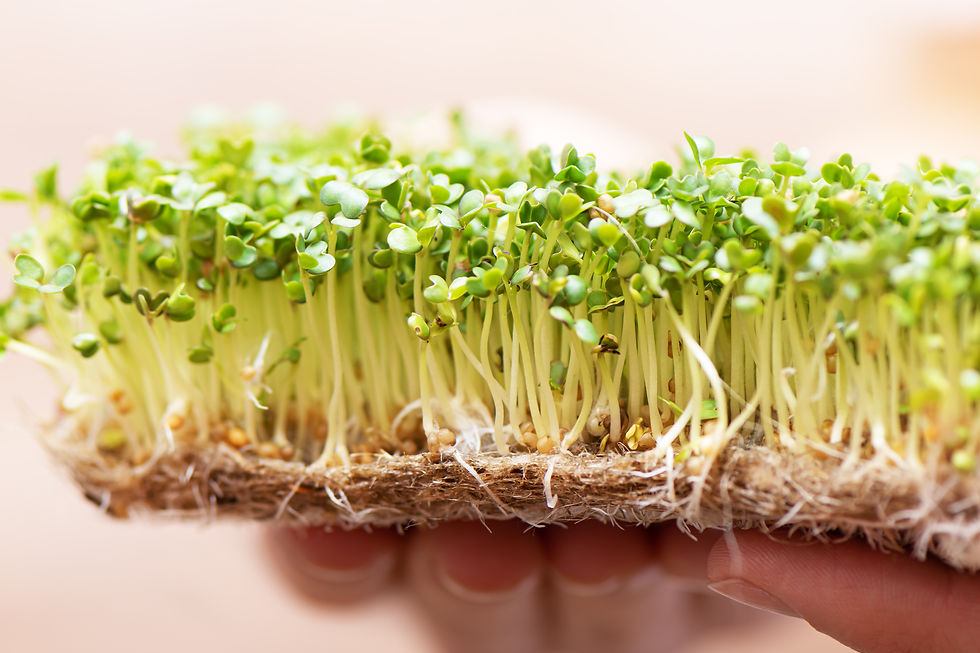Tiny Greens, Mighty Benefits
- prasuk jain
- May 5
- 1 min read
Updated: May 18

Explore why microgreens offer superior nutrient density compared to mature vegetables, and how to integrate them effectively into your diet.
Microgreens are the early growth stages of edible vegetables and herbs, typically harvested within 7–21 days after germination. Despite their size, they deliver concentrated amounts of vitamins, minerals, and phytonutrients—often surpassing the nutritional value of their mature counterparts.
Studies conducted by the USDA have shown that microgreens such as red cabbage, broccoli, and kale may contain up to 40 times more vitamins A, C, E, and K than mature leaves. These nutrients play a crucial role in boosting immune response, enhancing cellular repair, reducing oxidative stress, and supporting gastrointestinal health.
Incorporating microgreens into daily meals is simple and versatile. They can be added raw to salads, sandwiches, and wraps or blended into smoothies and soups. Their flavor profiles range from mild and nutty to sharp and peppery, making them not only nutritious but also culinary enhancers.
With their compact size and extraordinary nutrient profile, microgreens are a practical and potent addition to a balanced diet. Whether for preventive health or nutritional enhancement, they provide a convenient and scientifically supported way to elevate daily wellness.
























Comments